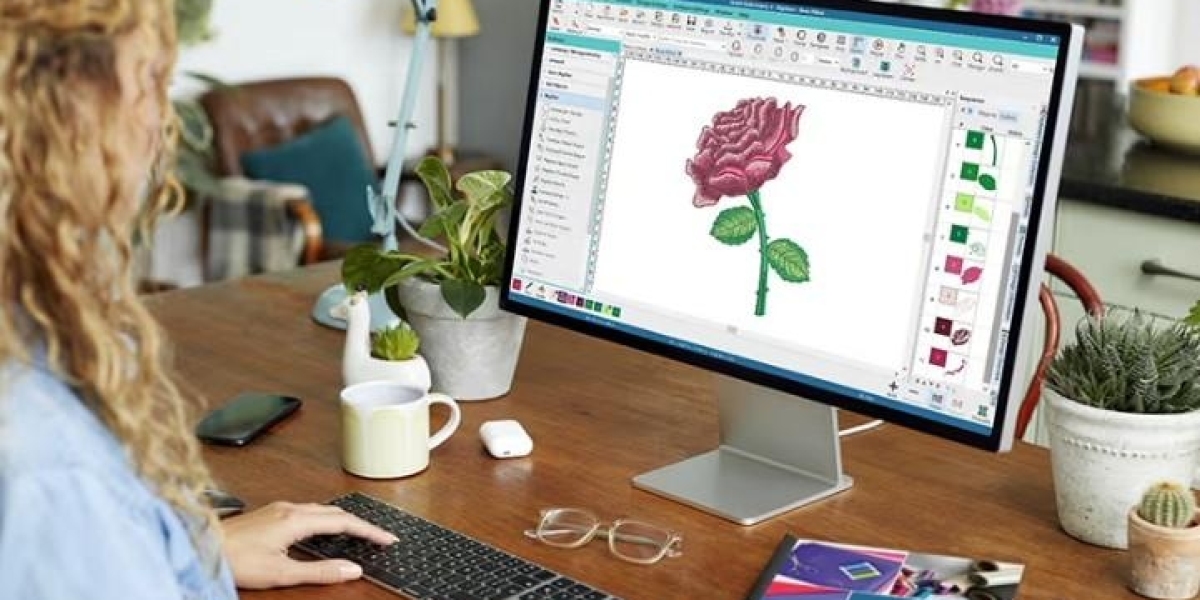Introduction
Your logo looks perfect on your website, business cards, and marketing materials. The colors pop, the lines are crisp, and it represents your brand exactly as you envisioned. But when you try to stitch that same logo onto a company polo or cap, something gets lost in translation. The crisp edges blur, the fabric puckers, and your professional branding suddenly looks amateurish. This common frustration reveals a fundamental truth: what works in the digital world doesn't always translate to the physical world of thread and fabric. This is where professional Logo Digitizing Services become essential, acting as expert translators who understand both languages and can transform your pixel-perfect design into stitch-perfect reality.
The journey from screen to stitch involves more than just file conversion—it requires reimagining your design for a completely different medium. Where digital designs live in a world of unlimited colors and perfect gradients, embroidery operates within the physical constraints of thread, needles, and fabric. Mastering this transformation means understanding how to work with these constraints rather than against them, creating embroidery that enhances your brand rather than compromising it.
The Language Barrier: Pixels vs. Stitches
Understanding why logo digitizing is necessary starts with recognizing the fundamental differences between digital images and embroidery files. Your digital logo, whether it's a JPEG, PNG, or vector file, consists of visual information arranged for screen display or printing. It's designed to be seen.
Embroidery, however, is a tactile medium built through physical interaction between thread and fabric. A digitized embroidery file contains no visual data—instead, it's a set of precise instructions telling the embroidery machine exactly where to move, what type of stitch to create, when to change colors, and how to handle the thread.
Think of it as the difference between a photograph of a building and the architectural blueprints used to construct it. Both represent the same structure, but they serve completely different purposes. The blueprint understands physics, materials, and construction sequences—things the photograph ignores entirely. Similarly, your digitized file must understand how thread will behave on specific fabrics and how to sequence thousands of individual stitches to create your design successfully.
The Art of Translation: More Than Just File Conversion
Professional logo digitizing goes far beyond simple file format conversion. It's a thoughtful process of adaptation that considers both the artistic integrity of your design and the physical realities of embroidery.
The process begins with analyzing your logo's elements. A skilled digitizer examines each component, determining which stitch types will work best for different areas. They might choose satin stitches for text and borders to create smooth, shiny columns that make details stand out. For larger areas, they'll likely use fill stitches that provide coverage without excessive stiffness. Fine details might become running stitches that add definition without bulk.
This decision-making process requires understanding how each stitch type behaves physically. Satin stitches, for instance, work beautifully for text but can create problems if used for large areas. Fill stitches provide excellent coverage but can feel stiff if too dense. The digitizer balances these considerations to preserve your logo's appearance while ensuring it will stitch successfully.
Building the Foundation: The Invisible Structure of Great Embroidery
What separates exceptional embroidery from mediocre results often lies in elements you never see in the finished product. The hidden foundation of underlay stitches makes the difference between embroidery that lies flat and looks vibrant versus designs that pucker, distort, or sink into the fabric.
Underlay stitches act as preparation for your fabric, much like priming a wall before painting. They stabilize the material, create a level sewing surface, and prevent the top stitches from pulling too tightly on the fabric. Different situations call for different underlay types: edge run underlay defines shapes, zigzag underlay stabilizes columns, and grid underlay supports large fill areas.
Professional digitizers also implement pull compensation—a technique that anticipates how stitches will physically affect the fabric. As the needle and thread pass through material, they naturally pull and distort it. Without compensation, circles can become ovals and squares can turn into trapezoids. By digitally pre-adjusting shapes to account for this distortion, digitizers ensure your logo maintains its proper proportions when stitched.
Working With Constraints: Embracing Embroidery's Limitations
Successful logo transformation requires embracing embroidery's inherent limitations rather than fighting against them. Where digital design offers unlimited colors and subtle gradients, embroidery works with solid thread colors and distinct color changes. Where digital designs can include extremely fine details, embroidery has minimum size requirements for readable text and recognizable elements.
A skilled digitizer knows how to work within these constraints while preserving your logo's essential character. They might simplify complex color gradients into strategic color blocks that suggest the same visual effect. They could adjust tiny text to maintain readability at smaller sizes or suggest modifications to intricate details that wouldn't translate well to stitches.
This process isn't about compromising your design—it's about adapting it to play to embroidery's strengths. The texture and dimension of thread can actually enhance many designs, adding physical presence that flat printing can't match. The key is understanding how to leverage these characteristics rather than seeing them as limitations.
The Human Touch: Why Automation Falls Short
While automated digitizing tools exist, they consistently fail to match the quality of human-digitized files. Software can trace shapes and assign basic stitch types, but it lacks the judgment and creative problem-solving that experienced digitizers bring to each project.
Human digitizers understand context and intent. They recognize when to preserve exact details versus when to simplify for better results. They make artistic decisions about stitch directions that enhance certain shapes or create visual interest. They adjust their approach based on the specific fabric you're using, something automated systems struggle with significantly.
Perhaps most importantly, human digitizers view your logo as more than just shapes to be traced. They understand it represents your brand identity, and they approach the digitizing process with the care that responsibility deserves. They're not just creating stitches—they're preserving and translating your brand's visual identity into a new medium.
The Business Case for Professional Digitizing
Investing in professional logo digitizing services makes business sense beyond just achieving better-looking results. Well-digitized files save time and money throughout your embroidery process while protecting your brand image.
Professionally digitized logos stitch out faster because they're optimized for efficiency. They have logical stitch sequences that minimize thread changes and jump stitches, reducing machine time and increasing your production capacity. They're also less likely to cause problems during stitching, which means fewer wasted garments and less frustration.
Most importantly, they ensure your branded merchandise properly represents your company. Employees wearing well-executed embroidered logos project professionalism and attention to detail. Customers receiving quality embroidered products form positive associations with your brand. The investment in professional digitizing pays dividends every time someone sees your embroidered logo.
Preparing Your Logo for Success
You can help ensure the best possible results from your digitizing service by providing clean, high-quality source files. Vector formats (AI, EPS, SVG) work best because they maintain crisp edges at any size. If you only have raster files (JPEG, PNG), provide the highest resolution version available.
Communicate clearly about how you plan to use the embroidered logo. Tell your digitizer about the garments or materials you'll be using, the approximate size of the embroidery, and any specific concerns or requirements you have. This information helps them optimize the file for your specific situation.
Conclusion: From Digital Perfection to Physical Excellence
Transforming your logo from pixels to stitches represents more than just a technical process—it's an opportunity to extend your brand identity into the physical world with the same care and precision you apply to your digital presence. The journey requires understanding embroidery as a distinct medium with its own strengths, limitations, and characteristics.
Professional logo digitizing services bridge the gap between these two worlds, combining technical expertise with artistic sensibility to create embroidery that does justice to your brand. They understand that your logo represents your business identity, and they approach the transformation process with the seriousness that responsibility deserves.
By embracing this transformation rather than resisting it, you open up new possibilities for your branding. Embroidery offers a tactile quality and durability that other decoration methods can't match. When executed properly, it elevates your merchandise from simple branded items to premium representations of your company's values and attention to quality.
Your logo deserves to look its best in every medium. With the right approach to digitizing, you can ensure it makes the journey from pixel perfection to stitch perfection, creating branded materials that you're proud to share and that others are delighted to receive.







